Dairy and Dairy Alternatives Report 2022




Learn more about Fi Europe
Dairy’s health halo 3
The rise of lactose-free 4
Plant-based dairy alternatives: Closing the nutritional gap 5
New health horizons: Functional products for gut health 6 New health horizons: Sugar reduction 8
Natural and clean label: The challenge for dairy alternatives 11
Cell-cultured ingredients: Daring to make dairy without animals 12
Contents
Good fat/bad fat 4
on category innovations
Cheese
Beverages
Yoghurt
Key takeaways
2 | Learn more about Fi Europe
Sustainability 12 Spotlight
15
15
16
17
18
Dairy’s health halo
Consumers are embracing the concept of positive nutrition, and this means they are focusing on backto-basic nutrition, according to market research company FMCG Gurus Back-to-basic nutrition is where people turn to everyday food and drink that they know and trust, deem natural, nutritious, affordable, and tasty, and high in functional ingredients

Despite some concerns over fat and sugar content, dairy products enjoy a health halo in the minds of consumers FMCG Gurus research shows that, overall, consumers are more likely to deem dairy as healthy rather than unhealthy, with kefir milk (74%), plain yoghurt (62%) and fresh milk (56%) seen as the healthiest.
This is due to dairy’s nutrient content In addition to protein and calcium, a single glass of semi-skimmed milk provides phosphorus, potassium, iodine, riboflavin and pantothenic acid as well as 72% of an individual’s daily needs for vitamin B12, according to the British Dietetic Association.1
Dairy products can further leverage these healthy associations with EU-authorised on-pack nutrition claims Brands in Europe, for instance, can inform consumers that protein contributes to the growth and maintenance of muscle mass; the maintenance of normal bones; and the normal growth and development of bone in children 2 Calcium enjoys an even greater number of permitted claims, relating to normal muscle function, bone and teeth maintenance, energy-yielding metabolism, neurotransmission, and the normal functioning of digestive enzymes, among others
The large scope of these nutrition claims means that healthy dairy products are a natural fit in many categories Whey protein is hugely popular in sports nutrition products as it contains all nine essential amino acids and is easily digestible; it has a ‘perfect score’ of 1 0 when measured according to the Protein Digestibility Corrected Amino Acid Score (PDCAAS).3 Dairy ingredients are also a welcome inclusion in children’s food and drink products as they help promote growth, an appealing claim to parent shoppers
3 Dairy and Dairy Alternatives Report 2022 |
The rise of lactose-free
In recent years, dairy products have experienced something of a backlash due to the presence of lactose, which is perceived as being difficult to digest and the cause of digestive problems.4
This has fuelled the popularity of lactose-free dairy products, which allow people to reap the nutritional benefits of dairy without the digestive discomfort caused by lactose.
Global growth in lactose-free product launches has increased by about 8% a year since 2016, with Europe accounting for 72% of new launches in 2020, according to Innova Market Insights. Indulgent product categories, like desserts and confectionery, have seen particularly strong innovation 5
Companies can also develop products that have a reduced lactose content or are easier to digest In Europe, the only probiotic health claim that EFSA has approved is for the microorganisms L. delbrueckii subsp. bulgaricus and Streptococcus thermophilus to improve lactose digestion in live yoghurt.6
Good fat/bad fat
Dairy products can have a high saturated fat content, a high intake of which has been linked to health problems such as cardiovascular disease 7
Many public health organisations recommend replacing saturated fats, such as butter and dairy blends, with polyunsaturated or monounsaturated margarine spreads and oils – including those that have been enriched with phytosterols, a naturally occurring part of plants that has been shown to lower blood cholesterol levels 8
Some brands are applying this to dairy product development. Spanish brand Artelac, for instance, claims to be the first dairy product to remove the saturated animal fat in liquid milk and replace it with 100% high oleic vegetable fat to help to reduce cholesterol
Nevertheless, in recent years, some consumers have begun to view fats in a different light, in part due to the healthiness associated with the ketogenic diet, which advocates a high intake of fat, moderate intake of protein and low intake of carbohydrates
Innova Market Insights tracked health claims made by products related to the fat content between 2017 and 2019 and found that many promise a range of holistic benefits to consumers, including physical performance, energy, weight loss and gut health 9
Although niche, a number of recent product launches attest to this growing popularity, particularly in the US.10 US keto brand, Can Do, recently launched a butter & salt-flavoured functional collagen bar made with grassfed butter and whey protein while Garden of Life makes grass-fed butter powder with added probiotics that can be added to coffee, shakes, and smoothies or used in cooking
Traditionally used in South Asian cooking, the dairy fat ghee (also known as clarified butter) is gaining popularity on the back of this trend Dutch brand Ghee Easy makes its organic ghee from grass-fed cows while Italian brand Reolì caters to plant-based consumers with an olive oil ghee, made from a blend of extra virgin olive oil, cocoa butter, and soy or sunflower lecithin.11
4 | Learn more about Fi Europe
Plant-based dairy alternatives: Closing the nutritional gap

Plant-based diets enjoy their own health halo. Euromonitor conducted a survey in 2021 and found that health is the main reason consumers choose to follow a dairy-free diet, with 42% of consumers globally saying that they do so because of digestive health, followed closely by 40% who say, more generally, that it makes them “feel healthier” 12
However, most plant proteins do not provide the same protein quality, based on the essential amino acid content, or the same calcium content They also do not score as highly in terms of protein digestibility, with the exception of soy 13
Recent research found that although consumers often view plant-based milks as equivalent to milk in nutritional value, many are low in protein and are fortified with varying amounts of calcium, and vitamins A and D.14 Another study concluded that current offerings of plant-based dairy alternatives can be considered “a practical but not nutritional replacement” for dairy products 15
Scientists have drawn up a set of proposed nutrient standards for the category and recommended that the food industry, public health regulatory authorities, and standardization bodies such as the Codex Alimentarius adopt them.16
Given the prominence of dairy products in a traditional Western diet, plant-based equivalents should try to match dairy’s macro- and micronutrient profile through fortification to avoid causing deficiencies.17
According to David Faulkner, associate director of food and drink at Mintel, this is becoming increasingly important for consumers:
“In addition to assured good taste, consumers also want to know that they are not compromising on nutrition when switching to plant-based, so delivery of a high protein content and other key nutrients is valuable."18
Blending plant proteins, such as rice and pea, can improve the essential amino acid content while fortification of calcium, protein, and other vitamins is an important strategy to improve the nutrient profile of dairy alternatives when developing new products or renovating existing ones
5 Dairy and Dairy Alternatives Report 2022 |
New health horizons: Functional products for gut health
According to FMCG Gurus, 61% of global consumers are interested in digestive health products even when not suffering from specific health problems. 19
This strong interest in gut health has caused a boom in demand for probiotics, prebiotics, and fermented foods. Probiotics are strains of microbes that have proven benefits for health while prebiotics and fibre provide ‘food’ for these healthy microbes 20
Although not all fermented products that contain live cultures impart probiotic benefits,21 the fermented nature of many dairy and dairy alternative products makes them a natural fit for added probiotics in the minds of consumers

Despite a tight regulatory landscape in Europe - companies have submitted almost 400 health claim applications for probiotics to EFSA and all but one have been rejected22 - there is strong consumer interest and demand. In 2019, the European probiotic supplement market was worth $1.65 billion, almost one third of the global consumption 23
In fact, consumers rate a health claim as the third most important criteria (52%) when deciding which dairy product to buy after taste (72%) and price (55%), according to FMCG Gurus.
“The high level of influence attached to health claims within the dairy sector, shows that consumers want to see functional claims when purchasing products, meaning brands must look to promote active ingredients,” says Mike Hughes from FMCG Gurus.24
Brands wishing to highlight the healthiness of a product that contains probiotics could instead make a health claim for another functional ingredient included in the formulation
For instance, on a product containing both probiotics and prebiotics, brands can make a health claim for prebiotics (although EFSA currently does not allow it to be linked to a wellness claim unless it is related to the fibre content). Prebiotic claims have risen by 42% in the past five years.25
UK kefir brand Biotiful Dairy, which has both a dairy and plantbased range, describes its products as ‘dairy upgraded’, informing consumers that the natural gut-friendly bacteria, vitamins and minerals in its kefir ensure the digestive system is resilient to the effects of stress, illness, and antibiotics
Portuguese dairy manufacturer Lactogal goes further with a fermented drinking milk under its Mimosa Eleva brand that contains both added probiotics and prebiotic fibre with inulin and amaranth
6
| Learn more about Fi Europe
Despite the ‘on-trend’ status of digestive health ingredients, more work is needed to inform the wider public of their benefits.
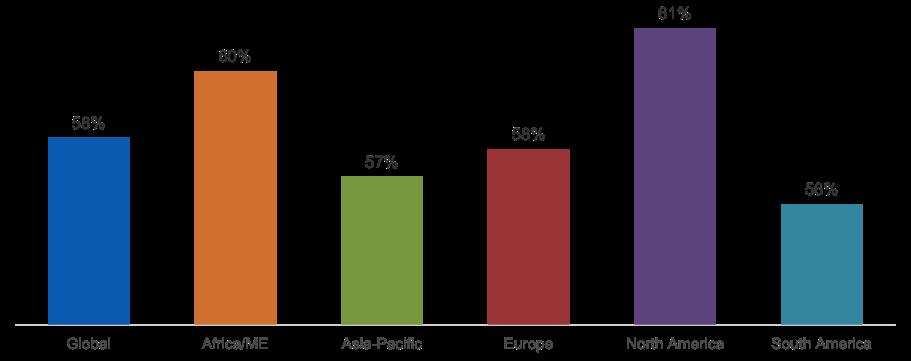
“[…] industry must look to educate consumers about different strains of probiotics, colony-forming unit (CFU) counts, and how prebiotics and probiotics complement each other within the digestive system. In addition, it must ensure that consumers are fully educated in a transparent and credible manner about the benefits of beneficial bacteria within the digestive system. At the same time, it is important that probiotic and prebiotic claims are not over promoted at the expense of sensory appeal.”26
Mike Hughes, head of research and insights, FMCG Gurus
Brands should also be aware that not all probiotic strains have the same resilience, with some more sensitive to heat, pH levels and oxygen than others 27 Bacillus subtilis is an example of a probiotic strain that is said to be particularly resilient because it is spore-forming This means it forms a protective shell that may allow it to survive processing, storage, and stomach pH to arrive intact in the gastro-intestinal tract, according to one supplier 28
7
Dairy and Dairy Alternatives Report 2022 |
Proportion of consumers who say they check for health claims when purchasing fresh dairy (2021)
New health horizons: Sugar reduction
Growing rates of obesity and type 2 diabetes have led to a backlash against high levels of sugar in many products
In fact, according to FMCG Gurus, reducing intake of ‘dietary evils’ such as sugar is still the main way consumers seek to improve their diets, ahead of a ‘positive nutrition’ approach whereby they look to maximize their intake of healthy, active ingredients 29
This, in turn, has seen industry direct efforts to reduce sugar in both everyday and indulgent dairy and dairy alternative products. Ingredient innovations in the area of natural sweeteners and sweetener-fibre blends are making sugar-reduced products possible without sacrificing taste. In 2021, for instance, the EU authorised the use of the best-tasting stevia molecule, Reb M, when produced via enzymatic conversion, making this sweetener more widely available at a lower cost 30
However, brands should think carefully of their product positioning before swapping sugar for high intensity sweeteners, such as sucralose, aspartame or acesulfame-k Despite the negative health impact associated with a high sugar intake, sugar is seen by consumers to be natural, especially when compared to artificial sweeteners. One industry survey that questioned US consumers found that honey was the preferred sweetener, followed by sugar 31 and Euromonitor notes that, rather than seeing high-intensity sweeteners as a solution, many consumers are keen to actively avoid them 32
Some brands therefore prefer to keep sugar in their formulation but at lower levels to enable a reduced-sugar claim. French brand Mon Premier Cacolac recently launched a family-size chocolate milk that scores an A rating on the Nutri-Score front-of-pack nutrition label and has 30% less sugar than other flavoured milks.33
Ingredient innovations are also allowing brands to continue using sugar in their dairy-based products while retaining previous levels of sweetness Nestlé, for instance, developed a porous, fast-dissolving sugar that creates the same sweet perception It launched the ingredient in a reduced-sugar milk chocolate in the UK and Ireland in 2018.34
Many plant-based milk brands do not add sugar to their products, instead leveraging the natural sweetness of the ingredient base However, they may need to exercise caution when making ‘no added sugar’ claims in some regions
Swedish oat milk giant Oatly voluntarily agreed to stop making ‘no added sugar’ claims on its oat milk in the US following a complaint to the advertising watchdog that these claims were misleading. Although Oatly does not add sugar or sweeteners to its plant-based milk, the complainant (Campbell Soup Company) argued that the enzymatic process it uses to create the oat milk base – a blend of water and oats –effectively “creates sugars in situ” by breaking down oat starch into simple sugars 35
8 | Learn more about Fi Europe

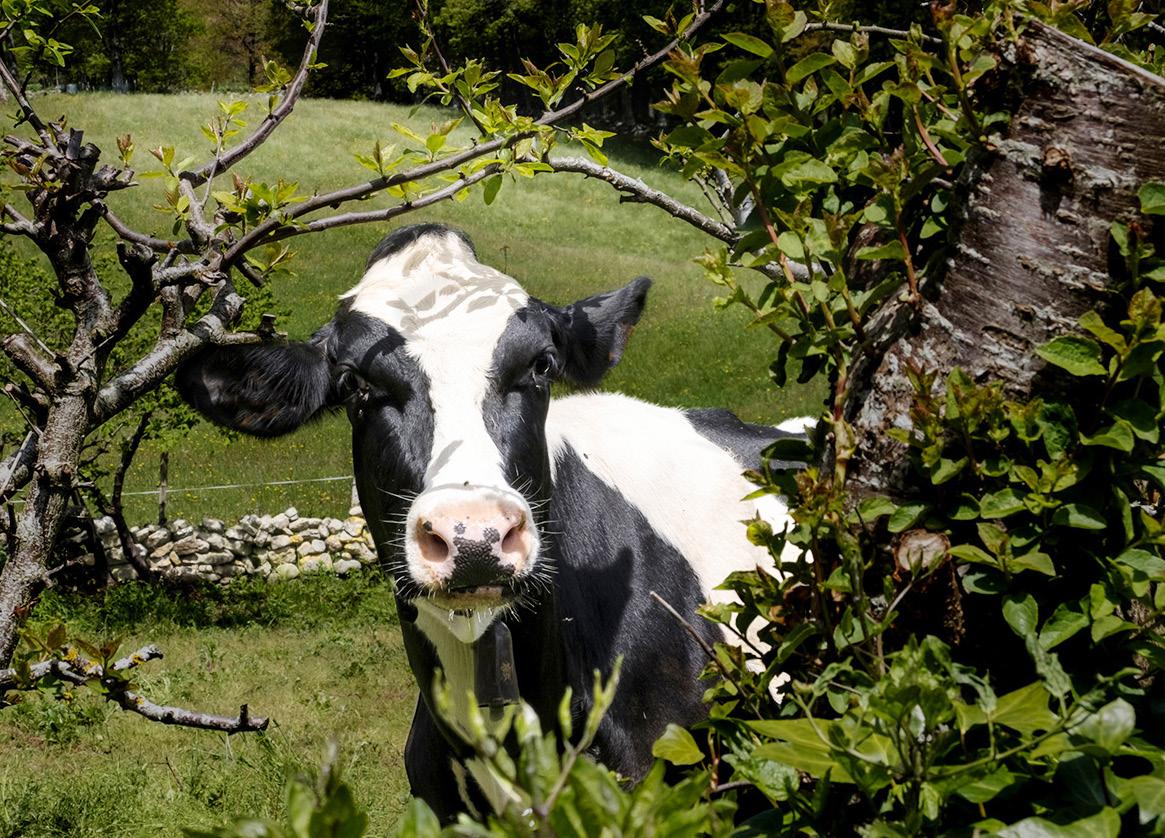
Discover the latest food ingredients trends and insights Join our free Newsletter SIGN UP NOW
to stay up to date! Follow us on Follow our business channel on Linkedin for insights into our portfolio, product innovations and creative collaboration with customers worldwide.
Zentis-Group @ LinkedIn

10 | Learn more about Fi Europe
Natural and clean label: The challenge for dairy alternatives
Many plant-based milks tend to be relatively minimally processed, containing a few ingredients such as water, a nut base, an emulsifier to prevent separation, and added vitamins and minerals. However, this is not the case for other dairy alternative categories, such as plant-based cheese
Replicating the sensory attributes and functionality of cheese – a texture that is creamy but meltable, for instance – is notoriously challenging The average plant-based cheese has 11 ingredients compared to just four in a traditional dairy cheese 36
ProVeg, a plant-based and animal-free advocacy group, notes that most of the current plant-based cheese products on the market consist mostly of oil, starch, and additives, which makes them undesirable from a nutritional perspective
The clean label trend in Europe has also evolved to include ingredients lists that are seen as ‘authentic’ Consumers are increasingly looking for an ingredient list that reads like a traditional recipe they could follow if making the product themselves at home, according to Mintel 37
Natural and premium plant-based cheeses are often made from a fermented nut base such as cashew and although such products are clean label, they are also more expensive, making them unaffordable to price-sensitive consumers 38
Dairy alternative brands should be mindful of a potential consumer backlash against plant-based products that misleadingly position themselves as healthy and natural
The World Health Organization (WHO) recently published a study scrutinising the naturalness and healthiness of plant-based products The study, entitled “The shift to plant-based diets: are we missing the point?”, identified “significant knowledge gaps in the nutritional composition of meat and dairy substitutes”39 and warned that many plant-based substitutes can be defined as ultra-processed foods.40
In order to elevate appeal for plant-based products, David Faulkner, associate director of food and drink at Mintel, recommends brands emphasise more strongly the characteristics associated with naturalness 41 ProVeg also notes significant white space opportunities to develop plant-based cheeses that have natural and clean label ingredient lists with both premium and affordable positionings in Europe 42
These clean label concerns are also important for dairy brands
“[…] the dairy industry needs to capitalize on consumers adopting a back-to-basic approach to nutrition, promoting how products contain only real and authentic ingredients and are free-from chemicals deemed detrimental to the individual and the wider planet,”43 says Mike Hughes, head of research and insights at FMCG Gurus.
11
Dairy and Dairy Alternatives Report 2022 |
Cell-cultured ingredients: Daring to make dairy without animals
Microbial fermentation, precision engineering and cell-cultivation are being developed and scaled up around the world, and dairy products made without animals are already on supermarket shelves in some regions. US company Perfect Day’s animal-free milk protein can be found in ice cream brands such as Brave Robot and Graeter’s Proponents of these novel production methods claim they will make dairy products more sustainable, drastically reducing greenhouse gas emissions and land use
These innovations pose something of an existential crisis to the traditional dairy industry However, dairy players are watching this space closely and even investing in it, including in Europe, where such ingredients have not yet received novel food approval
In 2021, Spanish dairy manufacturer Pascual teamed up with food tech accelerator Eatable Adventures to launch Mylkubator, an incubator specifically aimed at cell-cultured dairy start-ups. For its first cohort, it chose to accelerate four companies, including India-based Zero Cow Factory, which specialises in making A2 casein, and US start-up M2Factors, which develops culture media and food-grade growth factors.44
Sustainability
Sustainability is becoming an increasingly important factor that is influencing people’s food and drink choices in all categories
Proportion of consumers who say they have made changes to their diets in the last two years in order to lead a more sustainable lifestyle (2022)
 Source: FMCG Gurus
Source: FMCG Gurus
12 | Learn more about Fi Europe
“From a sustainability angle, the growth of plant-based alternatives has resulted in consumers questioning the ethical and environmental implications of cattle farming, especially when it comes to carbon footprint. However, in recent years, consumers have made greater efforts to seek out food and drink products that they deem to be real and authentic and that contain health boosting ingredients. Moreover, they have become more educated and savvier on the topic of sustainability, recognizing that that the issues of ethical and environmentally friendly practices and cattle farming do not have to be mutually exclusive.”45
Mike Hughes, head of research and insights, FMCG Gurus
Mintel data shows that vegan and plant-based cheeses are twice as likely as dairy cheese to feature ethical and environmental claims46 – but this does not mean consumers are not interested in dairy cheese products with sustainable claims
Cheese brands, for instance, are being held accountable at every production stage, and Mintel recommends they implement data-based initiatives to tangibly reduce their environmental impact, particularly their carbon emissions and water usage, along the whole supply chain 47
A number of cheese brands – both plant-based and dairy – are already doing so. In 2021, hard discounter Lidl announced plans to launch a carbon-neutral Cheddar cheese in UK stores 48 The supermarket chain said that it would help its supplier reduce on-farm emissions through a range of actions, such as reducing fertiliser use and converting to deforestation-free feed, and that the product’s claim would be verified by third-party organisation, The Carbon Trust
Plant-based Dutch brand Willicroft is working with former dairy farmers to grow the crops it needs for its vegan cheeses. After conducting an impact study, Willicroft found that cashews had the highest carbon emissions of all its ingredients while white beans were a functional, sustainable alternative that could be grown in a Northern European climate
As there were not enough white bean farmers in the Netherlands to meet its requirements, it began working with local government departments, non-profits and farmers on a transitional farming project to convert land used by dairy cows into bean fields, pledging to source white beans for its cheeses from the newly transitioned farmers 49
Dairy and Dairy Alternatives Report 2022 | 13



We help suppliers of food ingredients to: 71% of B2B buyers are researching food ingredients online before placing an order. Does your marketing strategy meet this trend? Generate high-quality leads Increase brand awareness with buyers of food ingredients Position food ingredient brands as thought leaders in the market Introducing Fi Marketing Services FiMarketingServices.com Visit our website The Digital Marketing & Sales Funnel Join the biggest EU ingredient event this December Learn More Online & In-Paris NEW VENUE
Spotlight on category innovation: Cheese
Nutrition and sustainability are the watchwords when it comes to new product development in the dairy cheese category in Europe 50
Although cheese can be high in saturated fat, there are opportunities for brands to leverage dairy’s healthy associations through fortification. Nearly one-quarter (24%) of consumers aged 16 to 19 years old in the UK said they were willing to pay more for cheese that had higher nutrients51 while between 60 and 70% of European parents said they would be concerned about their child missing out on important nutrients when eating or drinking dairy alternatives instead of dairy products 52
When it comes to functional claims within the dairy sector, the top five claims that consumers find appealing on products are ‘high in vitamins and minerals’ (64%), ‘high in calcium’ (58%), ‘high in protein’ (58%), ‘contains probiotics’ (55%) and ‘helps support the immune system’ (48%), notes FMCG Gurus.53
Meanwhile, some cheese brands are experimenting with unusual flavour combinations, such as hemp pesto.
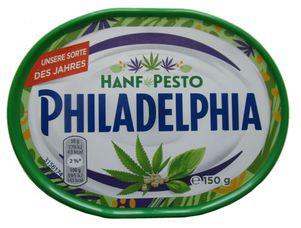
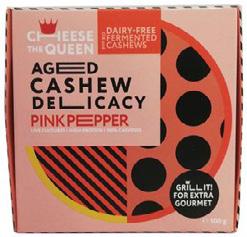
In Bulgaria, Cheese the Queen launched a fermented cashew vegan cheese enriched with vitamins and live cultures and flavoured with pink peppercorn that provides 18 g protein per pack
Source: Mintel Global New Products Database
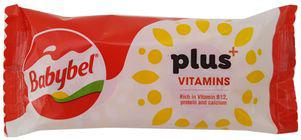
In the UK, Bel launched Babybel plus+ Cheese fortified with vitamins Each mini cheese contains one billion Lactobacillus cultures and has added vitamins B5, B6, B12, A, and D.

Source: Mintel Global New Products Database
In Austria, Mondelez experimented with new flavours through its limitededition Philadelphia cream cheese flavoured with basil and hemp seed pesto
Source: Mintel Global New Products Database
Dairy and Dairy Alternatives Report 2022 | 15
Spotlight on category innovation: Beverages
The beverage category lends itself well to product innovation as the short consumption time and one-time occasion of ready-to-drink beverages means consumers are willing to experiment with new flavours and formats
Both dairy and plant-based brands can appeal to regional taste preferences by using local or native ingredients that provide well-known health benefits or well-liked flavours. In Israel, Strauss launched a plantbased barista-style milk under its Soom brand made from sesame seeds, a highly popular ingredient in Middle Eastern cuisine 54
In India, dairy brand Amul launched a functional milk made with ashwagandha that it describes as an Ayurvedic latte while in Vietnam, Vinamilk launched bird's nest UHT Milk. The product is formulated with bird's nest essence that is claimed to support immunity and strong bones.55
Even producers of the most basic and unprocessed dairy drink – white liquid milk – are adding a premium positioning to their products by tapping into consumer desires for provenance, sustainability, and authenticity by emphasising their regional origins, use of sustainable feed, and traditional farming practices Mintel has tracked a rise in the number of recent white milk launches in Europe making such claims 56
Polish brand I Love Vege Barista recently launched an oat drink enriched with vitamins B6 and B12 said to support the immune system; vitamin E to help protect cells from oxidative stress; and vitamin D to help to maintain healthy bones and teeth
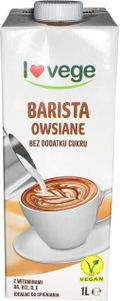

Source: Mintel Global New Products Database Italian brand Mila launched semi-skimmed ‘hay milk’ from Alto Adige made with milk from cows that forage on fresh grass, wildflowers, and hay in accordance with alpine traditions, the company says
Source: Mintel Global New Products Database
UK kefir brand Biotiful Dairy launched a dairy kefir & coffee mocha described as a gutfriendly fermented milk with cold-brew Arabica coffee and cacao. A source of vitamin B12 supports the normal functioning of the immune system and contributes to the reduction of tiredness and fatigue, while calcium contributes to the normal function of digestive enzymes
Source: Biotiful Dairy
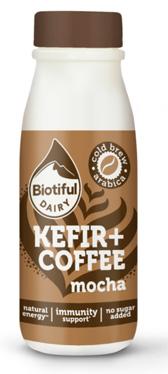
16
| Learn more about Fi Europe
Spotlight on category innovation: Yoghurt
The Covid-19 pandemic made many people rethink their lifestyles, prompting a renewed interest in holistic health, wellbeing and physical exercise Drinking yoghurt, with its naturally high protein and calcium content that supports the maintenance of normal muscle and bone development, as well as its satiating properties, is well positioned to meet demands for a post-activity snack Eighty-two percent of Polish adults agree that drinking yoghurt is a good pre- or post-workout snack 57
Do-it-yourself yoghurt kits that allow consumers to make their own dairy or plant-based yoghurt are also growing in popularity as they provide a personalised experience. Such kits, with glass jars, invoke nostalgic memories of childhood and give authenticity and ownership to the consumer, according to Euromonitor 58
Innovations in the plant-based yoghurt space continue to focus on healthy indulgence, promising to provide consumers with the sensory attributes they know and expect from dairy yoghurt, such as a rich and creamy taste and texture Many also add functional ingredients, such as vitamins, minerals, and live cultures, to provide the same nutritional benefits.
In Europe, the number of private label retailers and dairy brands launching plant-based yoghurts is testament to the continued widespread appeal of dairy alternatives
In Poland, Lidl launched a cranberry and pomegranate-flavoured spoonable non-dairy yoghurt alternative made from coconut pulp The plant-based yoghurt is fortified with zinc, selenium, biotin and vitamins D and B12, said to support the immune system

Source: Mintel Global New Products Database
Icelandic skyr brand Ísey launched a tropical fruit-flavoured skyr yoghurt drink in Belgium Ísey describes skyr, a traditional Icelandic fermented beverage, as being ideal for healthy and active lifestyles as it provides 23 g of protein and is fat-free and low in sugar

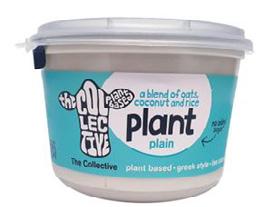
Source: Mintel Global New Products Database
UK dairy company The Collective launched a plain plant-based Greekstyle yoghurt alternative made from a blend of oats, coconut, and rice The yoghurt alternative contains the live cultures L. bulgaricus and S. thermophilus to provide a thick and creamy texture, it says
Source: Mintel Global New Products Database
17
Dairy and Dairy Alternatives Report 2022 |
Key takeaways
• As consumers adopt a ‘back-to-basics’ approach to nutrition, they are seeking out natural products perceived as real and authentic Dairy is well placed to meet this demand
• The ingredient lists of plant-based products are coming under scrutiny and many do not qualify as clean label Brands should be aware of a potential backlash as consumers continue to favour natural formulations
• Dairy products are an important source of protein, calcium, and other nutrients in the Western diet Plantbased brands should strive for nutritional equivalence to provide consumers with these health benefits and avoid nutrient deficiencies.

• Plant-based dairy alternatives have strong sustainable credentials to leverage but dairy brands can also communicate about their efforts to reduce their products’ environmental footprint where relevant
The information provided here was compiled with due care and up to date to the best of our knowledge on publication.
18
| Learn more about Fi Europe
Sources
1 https://www.bda.uk.com/resource/dairy-benefits.html
2 https://ec.europa.eu/food/safety/labelling_nutrition/claims/ register/public/?event=search
3 https://www.ncbi.nlm.nih.gov/pmc/articles/PMC3905294/
4 https://www.euromonitor.com/article/trends-to-watch-inplant-based-milk
5 https://insights.figlobal.com/innovation/latest-lactose-freeinnovation
6 https://efsa.onlinelibrary.wiley.com/doi/10.2903/j. efsa.2010.1763
7 https://www.cochrane.org/news/reduction-saturated-fatintake-cardiovascular-disease
8 https://www.heartfoundation.org.au/getmedia/3de7e8ec0fcb-48e0-9195-1857d135a324/HF_Phytosterol-Stanols_QA_ General_2017.pdf
9 https://www.innovamarketinsights.com/blog/trending-nowlow-carb-diets-elevate-phat-fats-in-north-america/
10 https://www.ingredientsnetwork.com/butter-is-better-keto-isdriving-resurgence-as-a-news116334.html
11 https://xn--reol-tpa.it/en/products/reoli-extravirgin/
12 https://www.euromonitor.com/article/trends-to-watch-inplant-based-milk
13 https://www.ncbi.nlm.nih.gov/pmc/articles/PMC3905294/
14 https://www.frontiersin.org/articles/10.3389/fnut.2021.761442/ full
15 https://www.sciencedirect.com/science/article/abs/pii/ S0963996921004853
16 https://www.researchgate.net/publication/355472031_Pro posed_Nutrient_Standards_for_Plant-Based_Beverages_In tended_as_Milk_Alternatives
17 https://www.ncbi.nlm.nih.gov/pmc/articles/PMC7912826/
18 https://www.mintel.com/blog/food-market-news/the-futureof-plant-based-food-and-drink-in-europe
19 https://www.naturalproductsinsider.com/digestive-health/ how-are-consumers-looking-improve-their-digestive-health 20 https://cdhf.ca/health-lifestyle/probiotics-vs-fermented-foods/ 21 https://cdhf.ca/health-lifestyle/probiotics-vs-fermented-foods/ 22 https://www.ipaeurope.org/legal-framework/european-legalframework/ 23 https://www.ipaeurope.org/legal-framework/market-data/ 24
"The Reinvigoration of the Dairy Sector," FMCG Gurus, 2022 25 https://insights.figlobal.com/health-wellness/prebiotics-andgut-health-how-position-products-market-success 26
"The Reinvigoration of the Dairy Sector," FMCG Gurus, 2022 27 https://www.dairyfoods.com/articles/95362-probiotics-prebiot ics-are-natural-partners-for-dairy 28 https://www.dairyfoods.com/articles/95362-probiotics-prebiot ics-are-natural-partners-for-dairy
29 "The Reinvigoration of the Dairy Sector," FMCG Gurus, 2022 30 https://www.ingredientsnetwork.com/eu-approves-steviaproduced-via-enzymatic-news113714.html
31 https://www.nutritionaloutlook.com/view/which-sweetenersdo-consumers-prefer-kerry-reveals-new-survey-findings
32 https://www.euromonitor.com/article/sugar-and-sweetenersconsumer-priorities-triggering-change
33 https://www.cacolac.fr/cacolac-mon-premier-cacolac/monpremier-cacolac-parents/
34 https://insights.figlobal.com/reduction-reformulation/whatsnew-sugar-reduction
35 https://bbbprograms.org/archive/advertising-claims-for-noadded-sugars-permanently-discontinued-for-oatly-oatmilkproducts-following-nad-challenge/
36 https://www.kerry.com/na-en/explore/winning-with-plantbased-report#report
37 https://insights.figlobal.com/fi-europe-2021-programme/ healthy-and-natural-continue-drive-clean-label-trend-inter view
38 https://proveg.com/wp-content/uploads/2021/09/PV_Con sumer_Survey_Report_2020_030620.pdf
39 https://www.sciencedirect.com/science/article/abs/pii/ S2211912421000407#!
40 https://www.sciencedirect.com/science/article/abs/pii/ S2211912421000407#!
41 https://www.mintel.com/blog/food-market-news/the-futureof-plant-based-food-and-drink-in-europe
42 https://proveg.com/wp-content/uploads/2021/09/PV_ Consumer_Survey_Report_2020_030620.pdf
43 "The Reinvigoration of the Dairy Sector," FMCG Gurus, 2022
44 https://www.ingredientsnetwork.com/dairybackedcellcultured-incubator-chooses-4-news115804.html
45 "The Reinvigoration of the Dairy Sector," FMCG Gurus, 2022
46 "A year of innovation in cheese, 2021," Mikolaj Kaczorowski, inovation analyst, Mintel
47 "A year of innovation in cheese, 2021", Mikolaj Kaczorowski, Innovation Analyst, Mintel
48 https://www.ingredientsnetwork.com/lidl-cheddar-cheeseshows-rising-popularity-of-news112531.html
49 https://willicroft.com/impact
50 "A year of innovation in cheese, 2021", Mikolaj Kaczorowski, Innovation Analyst, Mintel
51 "A year of innovation in cheese, 2021", Mikolaj Kaczorowski, Innovation Analyst, Mintel
52 https://insights.figlobal.com/fi-webinar-series/dairy-has-strongtaste-indulgence-and-nutritional-credentials-leverage-inter view
53
"The Reinvigoration of the Dairy Sector," FMCG Gurus, 2022
54 "A year of innovation in plant-based drinks, yogurt & ice cream, 2021", Mikolaj Kaczorowski, Innovation Analyst, Mintel
55 "A year of innovation in dairy drinks, 2021", Patrick Dahn, Innovation Analyst, Mintel
56 "A year of innovation in dairy drinks, 2021", Patrick Dahn, Innovation Analyst, Mintel
57 "A year of innovation in dairy drinks, 2021", Patrick Dahn, Innovation Analyst, Mintel
58 https://www.euromonitor.com/innovation-in-plant-basedyoghurt/report
19 Dairy and Dairy Alternatives Report 2022 |

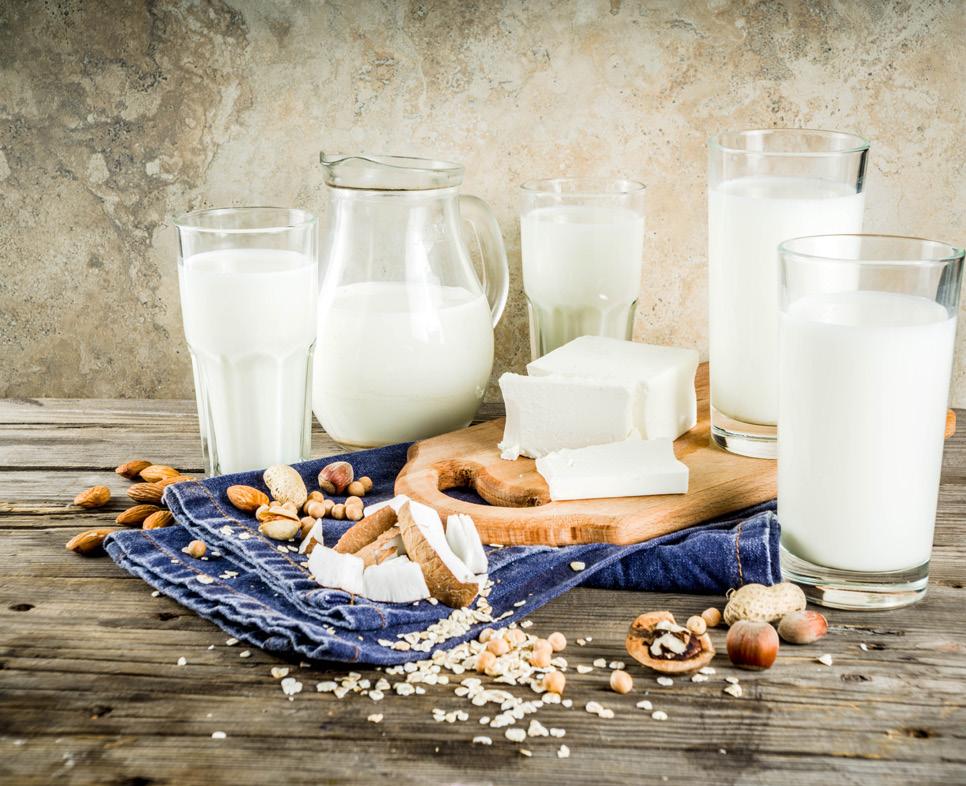
20
Snacking the modern way An overview of EU and US trends | Learn more about Fi Europe
Brought to you by:












 Source: FMCG Gurus
Source: FMCG Gurus














